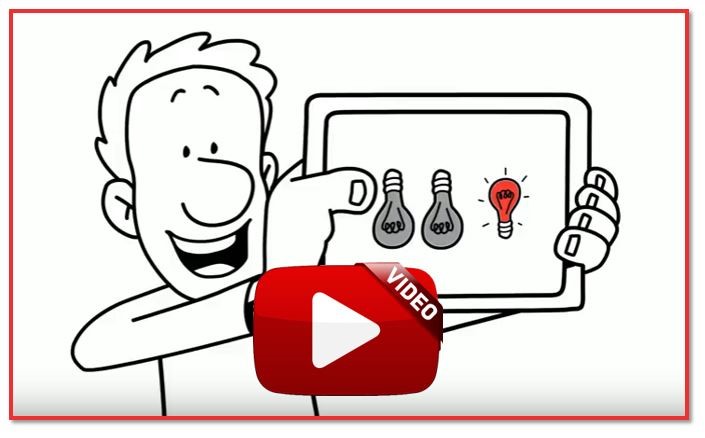Finish Strong!
Yes, that’s right! We are in the middle of the 4th quarter of 2020, and most of us are more than ready to see this year in our rearview mirror. Nevertheless, we must stay the course and finish it strong!
Traditionally, in a normal year, ‘finishing strong’ usually means that businesses are trying to employ tactics that would help them meet year-end goals – especially revenue goals. Revenue is extremely important, but finishing a year strong should mean more than just that – this year even more so.
For most of this year, we have all operated with a high degree of uncertainty about everything in our personal life and business operations. Most organizations put their strategic plan on hold and acted tactically, not knowing when the shutdown will end and when the next one might hit us – that’s understandable. We are all still operating in a higher-than-usual level of uncertainty, but we have gotten used to it, and many have been able to adjust their strategy (not just tactics) to deal with these new conditions.
We want to remind you that in spite of it all, we are in the 4th quarter of the year and we should not forget to do certain things, from a marketing point of view:
- Execute promotional efforts to meet your revenue goals.
- Make sure you are operating your business to meet the current ‘new normal’ preferences such as contactless interactions with customers, which we have discussed previously.
- Thank your customers! Shaking hands and sending fruit baskets might not be the way to go about it this year, but there are still creative ways to show your appreciation and gratitude to your customers.
- Plan for next year. It is almost certain that your business will have to do things differently next year too. Now is the time to conduct your strategic planning sessions and start building a plan. And given our collective experience in 2020, you may want to put together a ‘Plan B’, or even ‘Plan C’ as contingencies for 2021.
- Be kind. There is not a single soul on this planet who was not affected by the pandemic, whether directly or indirectly. Your customers and colleagues deserve special considerations… it will make us all better off.
If nothing else, the year 2020 has taught us that we truly live in a global economy. What happens in one country sends waves around the globe and has an effect on all of us – think about this when you plan.
Fractional CMO & Marketing can help with any of the above-mentioned 4th quarter reminders, and beyond. It will be our pleasure to discuss your needs and plans with you and without any obligations or strings attached, to help you finish the year strong.
Duke Merhavy, MBA, Ph.D.
President & Chief Marketing Officer
What Is Fractional CMO & Marketing?
Fractional CMO & Marketing is ‘Your Outsourced Marketing Department’ when you need expert marketing leadership and marketing services to accelerate growth and improve profitability, but you’re not quite ready to hire a full-time Chief Marketing Officer or your own marketing department.
Our unique arrangement is the most efficient, innovative, and cost-effective formula for you. Click on the image to the left to watch a short video.
We Help When You Need To:
- Generate more of the right kind of leads
- Close more sales faster
- Get repeat sales
- Formulate a more effective message
- Produce powerful sales tools
- Establish brand awareness, recognition, and preference
- Differentiate your brand from the competition
- Improve customer satisfaction and loyalty
- Develop lasting relationships with customers
- Introduce new products
Marketing Lingo: USP vs. UVP
By Peter Kenigsberg
Marketing is more than the message you put in front of prospective customers. It also requires buy-in from the entire company to ensure employees deliver and delight at every touchpoint. There are terms marketers use to differentiate the “inward facing” and “outward facing” positions companies take to separate their offerings from competitors. Respectively, they are the unique value proposition (UVP), and the unique selling proposition (USP).
- Unique Value Proposition (UVP): A statement directed towards employees the defines a company’s goals. Ask yourself: what value can you provide customers through your product or service? What strategy can the company employ to achieve this goal?
- Unique Selling Proposition (USP): A statement directed towards customers that helps differentiate your company’s offerings from the competition. Ask yourself: what is the primary benefit of my company’s product or service versus a competitor? This benefit should be loud and clear in your marketing materials.
Consider UNTUCKit, a fashion brand known for its untucked men’s shirts, when thinking about how to successfully craft UVP and USP statements for your company. From the first proof-of- concept in 2010 to 80 retail locations today, UNTUCKit has always put quality at the forefront. Employees are committed to making each product with the best materials, rivaling comparable products, as well as “outstanding customer service.” What is explained on UNTUCKit’s Quality page can be distilled into the following UVP statement: UNTUCKit customers can look forward to quality at every touchpoint, from the materials we use to the customer service we deliver.
While the UNTUCKit team keep “quality” top of mind, customers will be in search of the differentiator. What separates UNTUCKit from the plethora of alternatives on the market is the unique cut of the shirt that makes it perfect for wearing untucked. A slider on UNTUCKit’s website makes this difference very clear. The USP statement for UNTUCKit makes this differentiator even clearer: Shirts Designed to be Worn Untucked.
Understandably, it can be difficult to distinguish between the UVP and USP. In the case of UNTUCKit, “quality” could be a selling point for the customer, while building “Shirts Designed to be Worn Untucked” is certainly the goal of the company. Simply put, the UVP defines how the company will derive value from its offering, while the USP explains why that value provides a benefit to the end user. Knowing the difference between these statements will help you construct stronger UVPs and USPs, and ultimately, stronger offerings to your customers.
Podcast Series: Why You Should Consider Starting a Podcast (Part 2)
By Ginger Mace, Editor and Producer
Maybe you have a favorite podcast and enjoy the topic, but think it could use a different spin. Maybe you’ve been looking around for one that covers some specifics of your industry, but haven’t found one you like. Maybe you heard something about Joe Rogan’s podcast and his $100 million multi-year exclusive deal to have The Joe Rogan Experience on Spotify, and you want to get paid a boatload of money to talk about things you’re interested in while interviewing cool people.
There are many benefits to starting a podcast, and we have put together three for you to consider below. Also, if you would like a crash course on podcasts, check out last month’s article celebrating International Podcast Day.
Podcasts are cheap, easy to produce, simple to start doing, and don’t take much upkeep
We’re addressing this right off the bat, because a few of the top cited reasons for delays in starting a podcast is concerns about cost, producing the episodes, and equipment needed. In actuality, if you have a phone with a data plan, you can record and upload your first episode right now! But if you want to dive in head first…
An external microphone would certainly help with sound quality, and there are also apps available that make cataloging and distributing your podcast a breeze. If a recorded audio-only or video podcast (which allows for editing, and visual interest) is the way you’d like to go, you’ll find suggestions online for everything from backgrounds and light bars to teleprompter apps, and literally dozens of articles with advice on the latest video cameras. A logo and some artwork really make the podcast look professional, so we recommend you incorporate them from the beginning. An intro and outro have become the mark of a veteran content producer, and to keep up with the Joneses, you can utilize royalty free music and images, and video editing software on your desktop or a specific intro maker app for your phone.
Once your record, produce, and upload your first podcast, you will have cleared the biggest hurdle there is – getting started. Most shows upload one episode per week, and while you could start with that, we recommend recording 3-5 and make them all available at once – this way, after someone listens to your first amazing episode and wants to hear more, then you have some for them to binge. After a few episodes, they’ll be hooked! Those that host daily new podcasts with quality content are almost always a full-time gig, so there’s no need to strive for this upload frequency right out of the gate.
Podcasts help you promote, and position yourself in your industry
Notice the “you”, “yourself”, and “your”? That’s because with a podcast, you are in complete control of what the message says and how it is delivered. Podcasts allow you to share plenty of valuable information about your company and what makes it the best. Social media doesn’t offer that opportunity as robustly since tweets and LinkedIn posts disappear into by-specific-search-only oblivion when the feeds are updated.
If you become known as an expert in your field, it only stands to reason that your business will be positively affected by that, partly through increased opportunities to participate in conferences and speak at events. A podcast can be like a long-form, subtle commercial for your product or service. You could smoothly plug a book you authored by discussing a chapter in it, share some feedback from students in your online courses, or talk about current challenges in the market and how your service or product helps customers deal with them. And in addition to selling what your company offers, you could expand your services and perhaps even have sponsorships. Remember though, Joe Rogan’s podcast has been on for over 10 years, and it grew over time, not overnight.
There’s room for everyone
The world is getting closer to almost 1 million podcasts totaling over 30 million episodes! While it might seem from those figures that every possible subject has been covered, that’s not the case – the topic that you could build a podcast around using your knowledge and style hasn’t been done yet!
Interview, conversation, and monologue are the three most common styles of podcasts. Whether you prefer to ask the questions, have a discussion, or enjoy addressing a subject for a period of time yourself, there is a way to build a broadcast around what you’re comfortable with.
So…what are you waiting for? We believe the benefits to a company-focused podcast are plentiful, and Fractional CMO & Marketing can help you get started with one as part of an overall marketing strategy.
Take Advantage of Us
Call us at 888-412-2236 or use the button below to request a complimentary Marketing Needs Assessment, or to ask us a question regarding your most pressing marketing or sales challenges.





